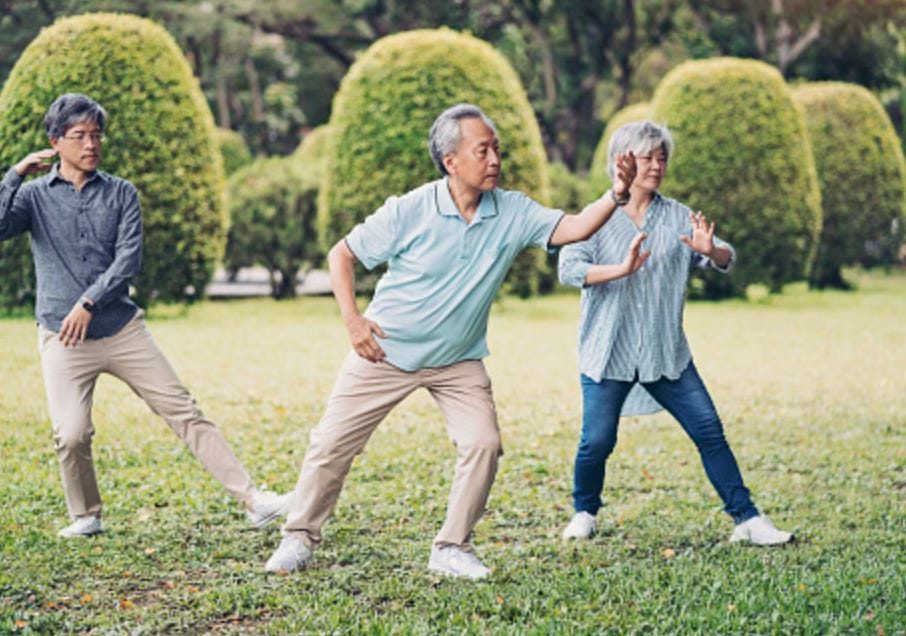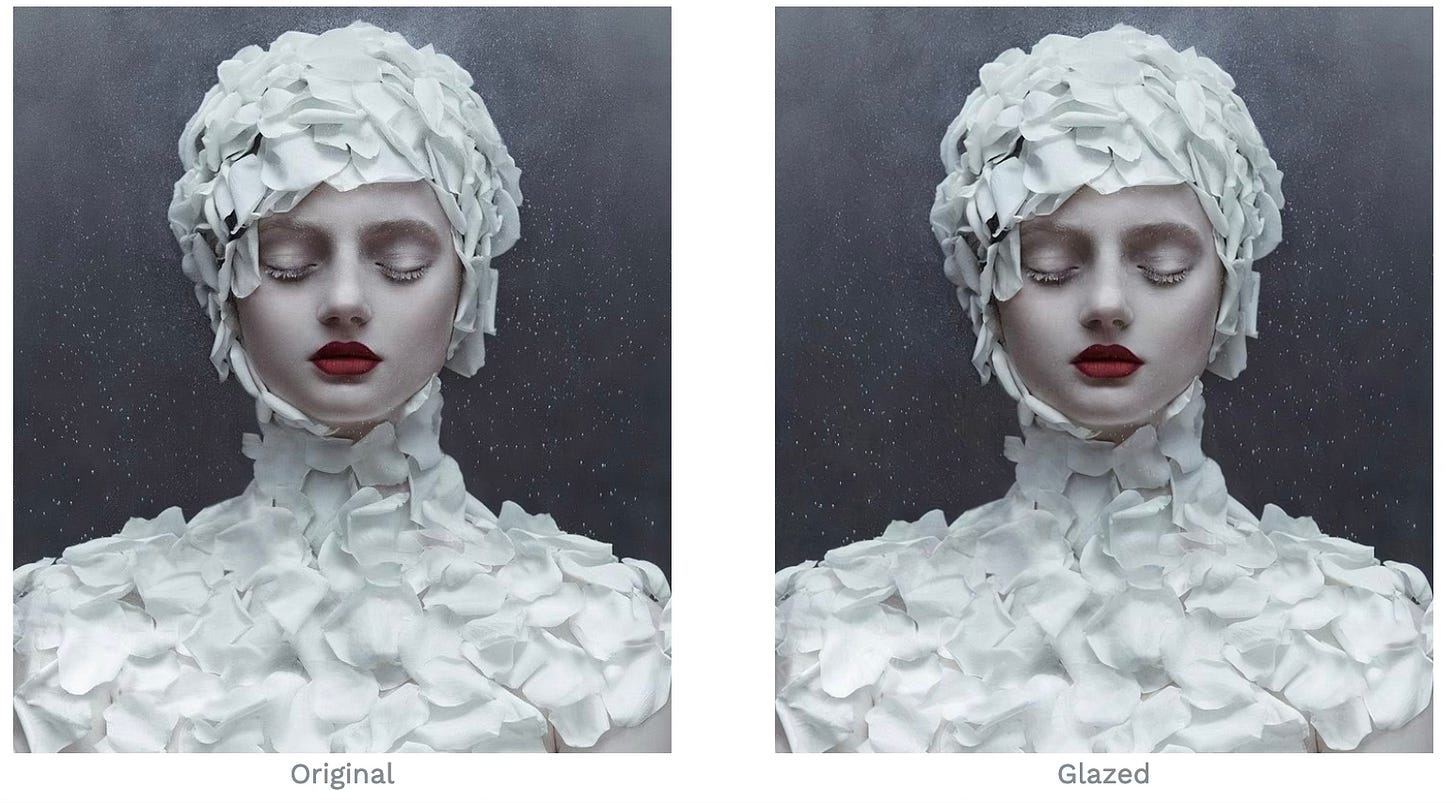Light Evaporating Water, Surpassing the Quantum Limit and Tai Chi's affect on Parkinson's Disease Symptoms
November 9
This week we will discover how light can evaporate water without heat. We investigate a new way of fooling AI image generators and protecting the artwork created by human artists. We examine a new method for LIGO, the gravitational wave observatory to beat the quantum limit. Finally we look at the effect of practicing Tai Chi on Parkinson’s Disease symptoms.
Light can Evaporate Water
We have known for a long time that heat will evaporate water however some recent experiments showed that water could evaporate at a higher rate than explained by the amount of heat applied. The excess evaporation could be up to double and sometimes triple the theoretical maximum rate.
A team from MIT has run a series of new experiments and simulations and come to the conclusion that, under certain conditions at the interface of the water and air, light can directly bring about evaporation without the need for heat.
The finding was a surprise as the water does not absorb light to any significant degree. This is why we can see clearly through many feet of clean water to the sea bottom in some places.
The team suspected that the excess evaporation was being caused by photons of light actually knocking bundles of water molecules loose from the water surface. The effect could only take place at the boundary layer between water and air. They subjected the water surface to different colors of light in sequence and measured the evaporation rate.
The results showed that the effect varied with different colors of light and peaked at a specific wavelength of green light. The color dependence showed no relation to heat supporting the idea that the light was evaporating the water.
The team has called the effect the “photomolecular effect” and they are now working on real world applications. Potential areas of study include improving the efficiency of solar powered desalination systems. Currently solar desalination produces 1.5 kilograms of water per square meter. This might be able to be improved three or four fold leading to cheap desalination. There may also be applications in processes that require drying of materials and evaporative cooling. We may be able to develop highly efficient solar cooling systems.
Tai Chi curbing Parkinson’s Disease Symptoms
Tai Chi is a Chinese Martial Art that involves slow controlled movements. It has been thought to provide benefits to health and mental health. A team from a range of Chinese Hospitals and Universities have found that the practice of Tai Chi by Parkinson’s patients was associated with slower disease progression and lower doses of drugs over time.
Parkinson’s is debilitating and progressive neurodegenerative disorder. It is characterized by slowness of movement, resting tremor and stiff and inflexible muscles. It is the fastest growing neurological condition in the world. By 2030 it is expected that there will be 5 million sufferers in China alone. There is no cure for Parkinson’s and drugs can only improve the clinical symptoms. There is no evidence that they slow the progression of the disease.
The teams followed two groups of patients from 2016 to 2021. One group practiced tai chi twice a week for an hour. Classes were provided to improve technique. The other group continued with their standard care. Disease severity was assessed at the beginning of the study and disease progression and the need for additional medication was assessed twice during and at the end of the study period.
Disease progression was slower in the tai chi group. This included overall symptoms, movement and balance. The number of patients that needed to increase their medication was roughly 10% higher in the non tai chi group. Cognitive function deteriorated more slowly in the tai chi group as did other non movement symptoms. Sleep and quality of life continuously improved. Falls, dizziness and back pain were also lower in the tai chi group.
The study was observational so does not establish cause and effect. Additionally the number of participants was relatively low (just over 300 in total). The long term effects of the practice of tai chi however could lead to a higher quality of life for longer.
Defeating AI Image Generators
We have spoken previously about the explosion in AI Image Generators (here is a new Australian one that I have been trialing). These AI driven systems rely on large amounts of training data to underpin their algorithms. Artists, entertainers, performers and record labels have started suing AI companies for using their copyrighted material without permission.
A team from the University of Chicago have developed a new tool to help artists fight back. Nightshade is an optional setting which has been added to Glaze, their online tool that can cloak digital artwork. Glaze merely disrupts the AI mimicking the style of an artist.
Glaze makes undetectable to the human eye changes to digital artworks. This makes algorithms think the art is a dramatically different style. We might see a glazed charcoal portrait with a realism style however the AI will see a modern abstract style (e.g. Jackson Pollock). When a user asks for a style that mimics the charcoal artist, Glaze causes the algorithm to generate something completely different.
Nightshade goes a step further. Nightshade causes the AI to learn the wrong names for objects and scenery. The team used Nightshade to “poison” images of dogs so that the AI thought that they were images of cats. After sampling 50 poisoned image samples, the AI began generating images of dogs with strange legs and unsettling appearances. After 100 exposures the AI began generating pictures of cats when asked for an image of a dog. After 300 exposures the AI generated perfect pictures of cats when asked for an image of a dog.
The team used Stable Diffusion to test Nightshade. They were able to group conceptually similar words and ideas into spacial clusters known as embeddings. This caused the inputs “husky, puppy and wolf” to return a picture of a cat.
The technique is very difficult to defend against as it requires AI model developers to weed out images that contained poisoned pixels. Single pixels are not obvious to the human eye and may be difficult for software data scraping tools to detect (at the very least it increases cost significantly).
The goal is not to destroy Generative AI but to return some power to the original creators of the images on which the algorithms are trained. Currently artists are not paid for the use of their work in developing Generative AI algorithms. By the way, screenshotting, reformatting compressing, filtering, cropping or smoothing out an image an image does not disrupt these techniques.
LIGO passes the Quantum Limit
The Laser Interferometer Gravitation Wave Observatory (LIGO) first detected gravitational waves in 2015. Gravitational Waves are ripples in space and time which were produced by a pair of colliding black holes. Since that time dozens of gravitational waves have been detected. These detections are driven by LIGO’s ability to detect the stretching and squeezing of space-time on a scale ten thousand trillion times smaller than a human hair.
Despite these successes LIGO is limited by the laws of quantum physics. At the subatomic scale the empty space between particles is filled with a faint crackling noise which interferes with LIGO’s measurements and restricts the sensitivity of the observatory. At team at MIT, Caltech and the LIGO observatories have now overcome this problem.
They have developed a new technique called squeezing. This allows them to skirt around the quantum limit and measure undulations in space time across the entire range of gravitational frequencies detected by LIGO.
The laws of quantum physics dictate that particles, including photons, randomly pop in and out of empty space. This creates the background noise and brings uncertainty to measurements. Quantum squeezing, which was first thought about in the 1970’s, pushes the noise from one place to another allowing for more precise measurements.
The technique relies on the fact that light can be manipulated like a ballon animal. If you make a dog out of a long tube balloon you can squeeze on one part of the balloon and force air to another part. This makes one part of the balloon smaller or more precise and the other larger or less precise.
Light can also be squeezed to be more precise in one trait, i.e. frequency. This makes another other trait, i.e. power to be less precise. This is due to the Uncertainty Principle, “we cannot know both the position and momentum of objects or the frequency and power of light at the same time”.
In 2019 LIGO started squeezing light to increase precision in the upper frequencies. This made measurements at lower frequencies less precise. Now, LIGO’s new frequency dependent optical cavities (long tubes three times the length of a football field) allow the team to squeeze light in different ways depending upon the frequency of the gravitational waves of interest. This reduces noise across the whole LIGO frequency range. Two specialized crystals turn one photon into two entangled pairs with lower energy. This light then interacts with the laser beams that LIGO uses to measure gravitational waves.
This new capability will allow researchers to watch more black hole collisions and neutron stars smashing into each other. This will give them more data about the composition of those objects.
Paying it Forward
If you have a start-up or know of a start-up that has a product ready for market please let me know. I would be happy to have a look and feature the startup in this newsletter. Also if any startups need introductions please get in touch and I will help where I can.
If you have any questions or comments please comment below.
I would also appreciate it if you could forward this newsletter to anyone that you think might be interested.
Till next week.




